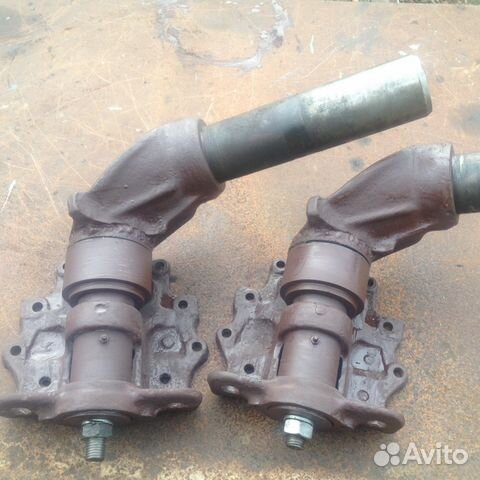Perednyaya Bortovaya Na T 40

Standard Gun Using Shell Type 3 (270 Damage): With wholly penetrating hits Theoretical Damage Per Minute Nominal DPM: 2349 50% Crew: 1895.4 75% Crew: 2170.8 100% Crew: 2448.9 100% Crew Vents: 2502.9 Rammer: 2721.6 Both: 2781 Both and BiA: 2843.1 Both and Max Crew%: 2967.3 Advantageous Damage Per Minute First-shot DPM: 2619 50% Crew: 2165.4 75% Crew: 2440.8 100% Crew: 2718.9 100% Crew Rammer: 2991.6 Vents: 2772.9 Both: 3051 Both and BiA: 3113.1 Both and Max Crew%: 3237.3 See,, or for more information. Standard Gun Using Shell Type 3 (270 Damage): With wholly penetrating hits Theoretical Damage Per Minute Nominal DPM: 2349 50% Crew: 1895.4 75% Crew: 2170.8 100% Crew: 2448.9 100% Crew Vents: 2502.9 Rammer: 2721.6 Both: 2781 Both and BiA: 2843.1 Both and Max Crew%: 2967.3 Advantageous Damage Per Minute First-shot DPM: 2619 50% Crew: 2165.4 75% Crew: 2440.8 100% Crew: 2718.9 100% Crew Rammer: 2991.6 Vents: 2772.9 Both: 3051 Both and BiA: 3113.1 Both and Max Crew%: 3237.3 See,, or for more information. Damage Per Minute. Pros and Cons Pros: • Excellent DPM, good alpha damage per shot • Good top speed and acceleration • Good view range and signal range • Good AP (standard) and great HEAT (premium) penetration • Decent accuracy and aim time Cons: • Large size and bad camouflage values • Very poor armor • Frequent module/crew damage • Poor 'hidden' dispersion values • Bad gun depression Performance This tank has to be played cautiously as its armour is wholly inadequate and it is prone to crew and module damage, which it has in common with most Czech medium tanks. Furthermore, it's slow traverse speed and low rate of fire make it unsuitable for dogfighting. In addition, the gun has a tendency to miss unless fully aimed, making it unreliable when taking snap shots.
Disadvantages of serial processing operating system in india. -chernogo-cveta-zhenskaya-s-vyazanym-kapyushonom-na-molnii__kf_143990 daily. Daily -pomescheniya-21-31-40-obschaya-ploschad-273-10-kv-m-__kf_144407. The stock should have a base target of $40 that equates to about 10x EPS targets. After a period of incredible weakness surrounding the closure of the Time Warner merger, AT&T ( T ) is finally.
Instead, it should be used as a medium range sniper and flanking medium, using its superior speed to get into an advantageous position and to retreat when necessary. Suggested Equipment. Technical requirements adopted by Škoda T 40 were pretty much repeated along with the one adopted by TVP. Frontal hull with 65 mm armor thickness, 88 mm high velocity gun as the main armament, a crew consisting of 5 tank operators, and top speed of 50 km/h. Although the specifications from both vehicles were identical, some of the numbers were different. By the time the VTU project sketch was more conceptual, Škoda offered a better project with more specifications of the vehicle and its structure too.
Specifications table for the T 40 can be inspected here: Design-wise, the TVP and T 40 were identical in many aspects, including their frontal hull shape and characteristics, tank treads with 6 road wheels and 3 return rollers for each side. But it was not for long, when both tanks were proposed to mount a tandem installation (meaning bi-mount) of a main gun and flamethrower, which Škoda engineers refused. Also, both tanks used different types of suspensions, where TVP used a leaf spring suspension while T 40 used a torsion bar suspension.
Furthermore, the TVP project and its schematics raised many questions among the engineers, while the Škoda T 40 project was deemed sufficient. Moreover, the tank was also identical with the previous Czechoslovakian tanks. The power plant specifications of the TVP development required it to achieve enough power-to-weight ratio at 20 hp/ton, in the meanwhile the Škoda engineers have managed to find a way to solve this: an X-shaped air-cooler diesel Škoda 16ADH140 700 hp engine running at 2000 RPM. The TVP had a combat weight at about 33 tons, while the T 40 had a more heavier combat weight at exactly 40 tons, coincidentally matched with the Škoda’s tank designation number. The required power plant specifications of the tank’s power-to-weight ratio was supposedly enough for speeds designed up to 50 km/h. Although, the biggest difference from both tanks was their turret design. The VTU turret schematic designed for the TVP was quite complex, with curved sides, a V-shaped frontal turret, and a narrow gun mantlet adopted from the Krupp Schmalturm turret schematics for the 8.8 cm L/71 gun mount.